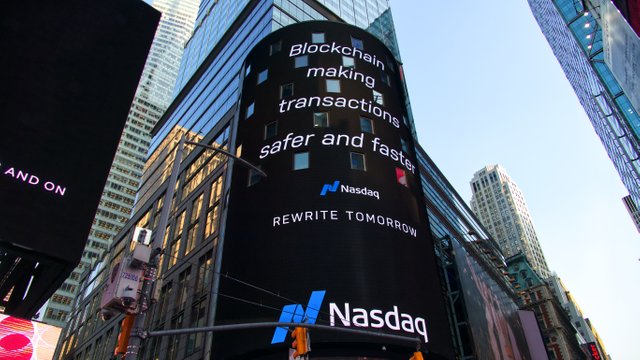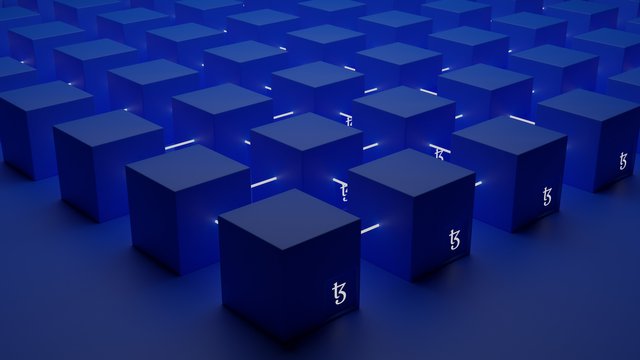The world of blockchain and cryptocurrency has been steadily growing in recent years, but the information available can be overwhelming especially for businesses looking to get involved.
 (image credit unplash)
(image credit unplash)
With all the possibilities now open to businesses, it's important to understand what's available and how the technology works.
That’s why we've created this guide: to give business owners a comprehensive understanding of blockchain and cryptocurrencies so they can make informed decisions about their own investments.
From platforms and applications to security protocols, this guide outlines everything you need to know about blockchain and cryptocurrency today.
What is Blockchain?
Blockchain is a digital ledger that contains the history of all cryptocurrency transactions. It is constantly growing as "completed" blocks are added to it with a new set of recordings.
 (image credit unplash)
(image credit unplash)
Each block contains a cryptographic hash of the previous block, a timestamp, and transaction data. Bitcoin nodes use the blockchain to differentiate legitimate Bitcoin transactions from attempts to re-spend coins that have already been spent elsewhere.
The blockchain is public and anyone can view it at any time. Transactions are verified by network nodes through cryptography and recorded in a public dispersed ledger called a blockchain. Bitcoin was invented by an unknown person or group of people using the name Satoshi Nakamoto in 2008. Transactions are made with no middlemen – meaning, no banks!
Bitcoin can be used to book hotels on Expedia, shop for furniture on Overstock, and buy Xbox games. But much of the hype is about getting rich by trading it. The price of bitcoin skyrocketed into the thousands in 2017.
(This answer has been taken from https://blockgeeks.com/guides/what-is-blockchain-technology/)
How does Blockchain work?
Blockchain is a decentralized, distributed ledger that records all transactions that take place on the network. Transactions are recorded chronologically and can be viewed by anyone with access to the network.
Each transaction is verified by consensus of the network participants and is then recorded in a block. Blocks are chained together, creating a permanent record of all transactions that have ever taken place on the network.
 (image credit unplash)
(image credit unplash)
Blockchain is often described as a digital ledger because it keeps track of all transactions that take place on the network. This makes it different from traditional ledgers, which are typically maintained by central authorities.
Because blockchain is decentralized, there is no need for a central authority to verify or approve transactions. Instead, the consensus of the network participants verifies each transaction.
The use of blockchain technology can help businesses to improve transparency and accountability, while also reducing costs. For example, because blockchain records all transactions chronologically, it can help businesses to trace the origins of products or track provenance information.
In addition, because blockchain does not require a central authority to approve or verify transactions, it can help businesses to streamline processes and reduce overhead costs.
What are the benefits of Blockchain?
There are many potential benefits of utilizing blockchain technology for businesses. These benefits include improved security, transparency, and efficiency.
 (image credit unplash)
(image credit unplash)
Security: One of the main advantages of blockchain is that it is highly secure. Transactions are recorded on a public ledger that is decentralized and distributed, making it nearly impossible to hack or tamper with. This can give businesses peace of mind knowing that their data is safe and secure.
Transparency: Another benefit of blockchain is its transparency. All transactions are recorded on the public ledger, so anyone can view them at any time. This could potentially help businesses avoid fraud and corruption, as all activities would be visible to everyone.
Efficiency: Blockchain technology can also help businesses become more efficient. For example, smart contracts can automate certain tasks, such as payments and other financial transactions. This can save businesses time and money by eliminating the need for manual processing.
What is Cryptocurrency?
 (image credit unplash)
(image credit unplash)
Cryptocurrency is a digital or virtual asset that uses cryptography for security. Cryptocurrencies are decentralized, meaning they are not subject to government or financial institution control.
Bitcoin, the first and most well-known cryptocurrency, was created in 2009. Cryptocurrencies are often traded on decentralized exchanges and can also be used to purchase goods and services.
How to use Blockchain & Cryptocurrency in business
 (image credit unplash)
(image credit unplash)
Blockchain & Cryptocurrency can be used in business in a number of different ways. Here are some examples:
Use blockchain to create a secure, decentralized database for your business. This can be used for things like customer data, financial data, inventory data, etc.
Use cryptocurrency to make payments or accept payments from customers. This can be done using wallets or by using a cryptocurrency exchange.
Use blockchain to create smart contracts for your business. This can automate various processes and make transactions more secure.
Use cryptocurrency to raise funds for your business through an Initial Coin Offering (ICO).
Use blockchain technology to create new products or services for your business. For example, you could create a decentralized application (DApp) on top of a blockchain platform like Ethereum.
Conclusion
The world of blockchain and cryptocurrency is constantly changing, and it's easy to get overwhelmed. Thankfully, we've put together this guide that should help businesses stay up-to-date with the latest trends in the industry.
With a better understanding of how blockchains, cryptocurrencies, wallets, and exchanges work, businesses can make more informed decisions when dealing with them.
We hope that you found this guide useful in helping your business navigate the ever-evolving landscape of blockchain and cryptocurrency technology.